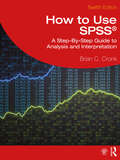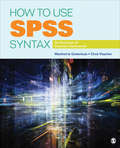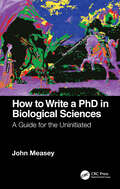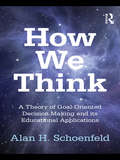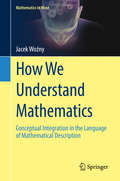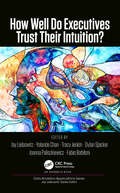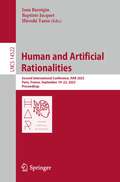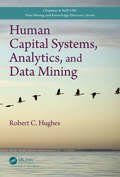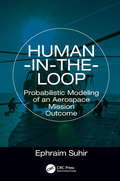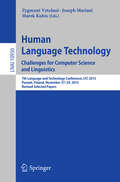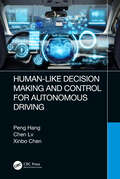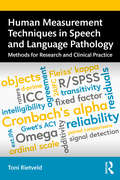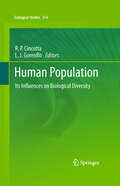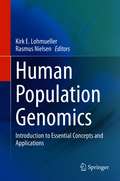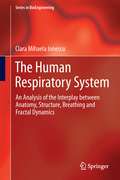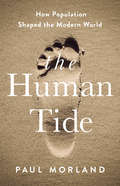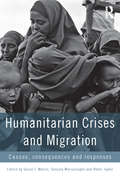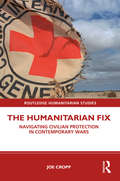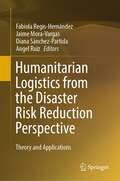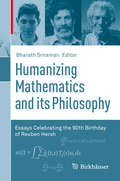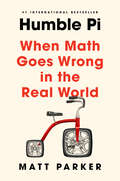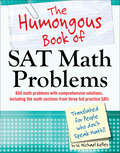- Table View
- List View
How to Think Like a Mathematician
by Kevin HoustonLooking for a head start in your undergraduate degree in mathematics? Maybe you've already started your degree and feel bewildered by the subject you previously loved? Don't panic! This friendly companion will ease your transition to real mathematical thinking. Working through the book you will develop an arsenal of techniques to help you unlock the meaning of definitions, theorems and proofs, solve problems, and write mathematics effectively. All the major methods of proof - direct method, cases, induction, contradiction and contrapositive - are featured. Concrete examples are used throughout, and you'll get plenty of practice on topics common to many courses such as divisors, Euclidean algorithms, modular arithmetic, equivalence relations, and injectivity and surjectivity of functions. The material has been tested by real students over many years so all the essentials are covered. With over 300 exercises to help you test your progress, you'll soon learn how to think like a mathematician.
How to Use SPSS®: A Step-By-Step Guide to Analysis and Interpretation
by Brian C. CronkHow to Use SPSS® is designed with the novice computer user in mind and for people who have no previous experience using SPSS. Each chapter is divided into short sections that describe the statistic being used, important underlying assumptions, and how to interpret the results and express them in a research report. The book begins with the basics, such as starting SPSS, defining variables, and entering and saving data. It covers all major statistical techniques typically taught in beginning statistics classes, such a descriptive statistics, graphing data, prediction and association, parametric inferential statistics, nonparametric inferential statistics and statistics for test construction. More than 275 screenshots (including sample output) throughout the book show students exactly what to expect as they follow along using SPSS. The book includes a glossary of statistical terms and practice exercises. A complete set of online resources including video tutorials and output files for students, and PowerPoint slides and test bank questions for instructors, make How to Use SPSS® the definitive, field-tested resource for learning SPSS. New to this edition: Fully updated to the reflect SPSS version 29. Every screen shot has been recaptured. New video supplements for all practice exercises. References to significance levels have been updated to reflect the new SPSS output format. Effect size is now shown in output for many procedures and reference to some effect size has been moved from Appendix A to be more integrated into the chapters. Sample results sections now also include effect size where SPSS directly calculates effect size. A new section covering the EXPLORE command has been added to Chapter 3.
How to Use SPSS Syntax: An Overview of Common Commands
by Manfred Te Grotenhuis Chris VisscherRather than focusing on SPSS menus and the graphic user interface, How to Use SPSS Syntax, by Manfred te Grotenhuis and Chris Visscher, focuses on the syntax rules in SPSS, a more encompassing approach that allows readers to replicate statistical analyses by storing them in a file for future use. Practical, accessible, and highly focused, the book is brief, while still helping readers develop an in-depth understanding of the common syntax rules and commands. In every chapter, the authors clearly explain the syntax, show the main results, and include social science research examples and downloadable files that allow readers to follow along. Checks throughout the book help readers determine whether the syntax is used correctly.
How to Use SPSS Syntax: An Overview of Common Commands
by Manfred Te Grotenhuis Chris VisscherRather than focusing on SPSS menus and the graphic user interface, How to Use SPSS Syntax, by Manfred te Grotenhuis and Chris Visscher, focuses on the syntax rules in SPSS, a more encompassing approach that allows readers to replicate statistical analyses by storing them in a file for future use. Practical, accessible, and highly focused, the book is brief, while still helping readers develop an in-depth understanding of the common syntax rules and commands. In every chapter, the authors clearly explain the syntax, show the main results, and include social science research examples and downloadable files that allow readers to follow along. Checks throughout the book help readers determine whether the syntax is used correctly.
How to Write a PhD in Biological Sciences: A Guide for the Uninitiated
by John MeaseyYou don’t have to be a genius to write a PhD. Of course, it will always involve a lot of hard work and dedication, but the process of writing is a whole lot easier if you understand the basic ground rules. This book is a guide through the dos and don’ts of writing a PhD. It will be your companion from the point when you decide to do a PhD, providing practical guidance to getting started, all the way through the nuts and bolts of the writing and editing process. It will also help you to get - and stay - in the right mental framework and establish good habits from the beginning, putting you in a commanding position later on. Examples are tailored to the biological sciences, offering a unique reference for PhD students in these disciplines. Embarking on a PhD doesn’t need to be daunting, even if it’s your first experience working within academia. Each short section focuses on writing - considered by many to be the most difficult aspect of a PhD - and delves into a practical detail of one aspect, from the title to the supplementary material. Whether you’re a student just starting your studies, an early career researcher or a supervisor struggling to cope, the book provides the insider information you need to get ahead.
How We Think: A Theory of Goal-Oriented Decision Making and its Educational Applications (Studies in Mathematical Thinking and Learning Series)
by Alan H. SchoenfeldTeachers try to help their students learn. But why do they make the particular teaching choices they do? What resources do they draw upon? What accounts for the success or failure of their efforts? In How We Think, esteemed scholar and mathematician, Alan H. Schoenfeld, proposes a groundbreaking theory and model for how we think and act in the classroom and beyond. Based on thirty years of research on problem solving and teaching, Schoenfeld provides compelling evidence for a concrete approach that describes how teachers, and individuals more generally, navigate their way through in-the-moment decision-making in well-practiced domains. Applying his theoretical model to detailed representations and analyses of teachers at work as well as of professionals outside education, Schoenfeld argues that understanding and recognizing the goal-oriented patterns of our day to day decisions can help identify what makes effective or ineffective behavior in the classroom and beyond.
How We Understand Mathematics: Conceptual Integration In The Language Of Mathematical Description (Mathematics in Mind)
by Jacek WoźnyThis volume examines mathematics as a product of the human mind and analyzes the language of "pure mathematics" from various advanced-level sources. Through analysis of the foundational texts of mathematics, it is demonstrated that math is a complex literary creation, containing objects, actors, actions, projection, prediction, planning, explanation, evaluation, roles, image schemas, metonymy, conceptual blending, and, of course, (natural) language. The book follows the narrative of mathematics in a typical order of presentation for a standard university-level algebra course, beginning with analysis of set theory and mappings and continuing along a path of increasing complexity. At each stage, primary concepts, axioms, definitions, and proofs will be examined in an effort to unfold the tell-tale traces of the basic human cognitive patterns of story and conceptual blending. This book will be of interest to mathematicians, teachers of mathematics, cognitive scientists, cognitive linguists, and anyone interested in the engaging question of how mathematics works and why it works so well.
How Well Do Executives Trust Their Intuition (Data Analytics Applications)
by Jay Liebowitz Yolande Chan Tracy Jenkin Dylan Spicker Joanna Paliszkiewicz Fabio BabiloniIn this age of Big Data and analytics, knowledge gained through experiential learning and intuition may be taking a back seat to analytics. However, the use of intuition should not be underestimated and should play an important role in the decision process. <P><P>How Well Do Executives Trust Their Intuition covers the Fulbright research study conducted by this international team of editors. The main question of their investigation is: How well do executives trust their intuition? In other words, do they typically prefer intuition over analysis and analytics. And equally importantly, what types of intuition may be most favorable looking at different variables? The research utilizes survey and biometrics approaches with C-level executives from Canada, U.S., Poland, and Italy. <P><P>In addition, the book contains chapters from leading executives in industry, academia, and government. Their insights provide examples of how their intuition enabled key decisions that they made. <P><P>This book covers such topics as: <li>Using intuition <li>How gender, experience, role, industry, and country affect intuition <li>Trust and intuition in management <li>Trusting intuition <li>It’s a matter of heart <li>Leadership intuition and the future of work <li>Creating an intuitive awareness for executives <li>Improvisation and instinct. <P><P>The book explores how executives can use intuition to guide decision making. It also explains how to trust intuition-based decisions. How Well Do Executives Trust Their Intuition is a timely and prescient reminder in this age of data-driven analytics that human insight, instinct, and intuition should also play key roles.
HSP Math [Grade 4]
by Evan Maletsky Joyce Mcleod Karen Norwood Tom Roby James Mendoza Epperson Juli Dixon Janet Scheer David Wright David Molina Jennie Bennett Lynda Luckie Angela Andrews Vicki Newman Barbara Montalto Minerva Cordero-EppersonNIMAC-sourced textbook
Human and Artificial Rationalities: Second International Conference, HAR 2023, Paris, France, September 19–22, 2023, Proceedings (Lecture Notes in Computer Science #14522)
by Jean Baratgin Baptiste Jacquet Hiroshi YamaThis book constitutes the proceedings of the Second International Conference on Human and Artificial Rationalities, HAR 2023, which took place in Paris, France, in September 2023. The 18 full and 5 short papers included in this book were carefully reviewed and selected from 39 submissions. They were organized in topical sections as follows: Human and artificial thinking; human thinking and reasoning; neuropsychology and interaction; artificial agents and interaction; and applied reasoning. This volume also contains 2 invited talks in full-paper length.
Human Capital Systems, Analytics, and Data Mining (Chapman & Hall/CRC Data Mining and Knowledge Discovery Series)
by Robert C. HughesHuman Capital Systems, Analytics, and Data Mining provides human capital professionals, researchers, and students with a comprehensive and portable guide to human capital systems, analytics and data mining. The main purpose of this book is to provide a rich tool set of methods and tutorials for Human Capital Management Systems (HCMS) database modeling, analytics, interactive dashboards, and data mining that is independent of any human capital software vendor offerings and is equally usable and portable among both commercial and internally developed HCMS. The book begins with an overview of HCMS, including coverage of human resource systems history and current HCMS Computing Environments. It next explores relational and dimensional database management concepts and principles. HCMS Instructional databases developed by the Author for use in Graduate Level HCMS and Compensation Courses are used for database modeling and dashboard design exercises. Exciting knowledge discovery and research Tutorials and Exercises using Online Analytical Processing (OLAP) and data mining tools through replication of actual original pay equity research by the author are included. New findings concerning Gender Based Pay Equity Research through the lens Comparable Worth and Occupational Mobility are covered extensively in Human Capital Metrics, Analytics and Data Mining Chapters.
Human-in-the-Loop: Probabilistic Modeling of an Aerospace Mission Outcome
by Ephraim SuhirImprovements in safety in the air and in space can be achieved through better ergonomics, better work environments, and other efforts of traditional avionic psychology that directly affect human behaviors and performance. Not limited to just the aerospace field, this book discusses adaptive probabilistic predictive modeling in human-in-the-loop situations and gets you familiar with a new, powerful, flexible, and effective approach to making outcomes from missions successful and safe. Covers the concepts, which are adaptable across other disciplines, and methodology for evaluating the likelihood of a successful outcome of an extraordinary situation Considers human performance and equipment/instrumentation reliability, as well as other possible sources of uncertainty Presents probabilistic assessment of an aerospace mission outcome Provides the most effective, physically meaningful, and cost-effective planning of an aerospace mission Offers how to organize and provide the most effective training of personnel
Human Language Technology. Challenges for Computer Science and Linguistics: 7th Language and Technology Conference, LTC 2015, Poznań, Poland, November 27-29, 2015, Revised Selected Papers (Lecture Notes in Computer Science #10930)
by Zygmunt Vetulani Joseph Mariani Marek KubisThis book constitutes the refereed proceedings of the 7h Language and Technology Conference: Challenges for Computer Science and Linguistics, LTC 2015, held in Poznan, Poland, in November 2015. The 31 revised papers presented in this volume were carefully reviewed and selected from 108 submissions. The papers selected to this volume belong to various fields of: Speech Processing; Multiword Expressions; Parsing; Language Resources and Tools; Ontologies and Wordnets; Machine Translation; Information and Data Extraction; Text Engineering and Processing; Applications in Language Learning; Emotions, Decisions and Opinions; Less-Resourced Languages.
Human-Like Decision Making and Control for Autonomous Driving
by Peng Hang Chen Lv Xinbo ChenThis book details cutting-edge research into human-like driving technology, utilising game theory to better suit a human and machine hybrid driving environment. Covering feature identification and modelling of human driving behaviours, the book explains how to design an algorithm for decision making and control of autonomous vehicles in complex scenarios. Beginning with a review of current research in the field, the book uses this as a springboard from which to present a new theory of human-like driving framework for autonomous vehicles. Chapters cover system models of decision making and control, driving safety, riding comfort and travel efficiency. Throughout the book, game theory is applied to human-like decision making, enabling the autonomous vehicle and the human driver interaction to be modelled using noncooperative game theory approach. It also uses game theory to model collaborative decision making between connected autonomous vehicles. This framework enables human-like decision making and control of autonomous vehicles, which leads to safer and more efficient driving in complicated traffic scenarios. The book will be of interest to students and professionals alike, in the field of automotive engineering, computer engineering and control engineering.
Human Measurement Techniques in Speech and Language Pathology: Methods for Research and Clinical Practice
by Rietveld ToniHuman Measurement Techniques in Speech and Language Pathology gives an overview of elicitation methods in the assessment and diagnosis of speech and language disorders and explains approaches to the qualification of the obtained data in terms of agreement and reliability. Despite technological advances in the assessment and diagnosis of speech and language disorders, the role of human judgements is as important as ever. Written to be accessible to students, researchers and practitioners alike, the book not only provides an overview of elicitation procedures of human judgement such as visual analog scaling, Likert scaling etc. but also presents methodological and statistical approaches to quality assessment of judgements. The book introduces statistical procedures for processing scores obtained in paired comparisons and in the context of signal detection theory, and introduces software relevant for the calculation of a large number of coefficients of reliability and agreement. Featuring a wealth of reader-friendly pedagogy throughout, including instructions for using SPSS and R software, clarified by many illustrations and tables, example reports, and exercise questions to test the readers understanding, it is an ideal companion for advanced students and researchers in the field of speech pathology.
Human Population
by Richard P. Cincotta Larry J. GorenfloIn this volume the dynamic patterns of human density and distribution are examined in relation to the viability of native species and the integrity of their habitats. Social, biological, and earth scientists describe their models, outline their conclusions from field studies, and review the contributions of other scientists whose work is essential to this field. The book starts with general theories and broad empirical relationships that help explain dramatic changes in the patterns of the occurrence of species, changes that have developed in parallel with human population growth, migration and settlement. In the following chapters specific biomes and ecosystems are highlighted as the context for human interactions with other species. A discussion of the key themes and findings covered rounds out the volume. All in all, the work presents our species, Homo sapiens, as what we truly have been and will likely remain--an influential, and often the most influential, constituent in nearly every major ecosystem on Earth.
Human Population Genomics: Introduction to Essential Concepts and Applications
by Kirk E. Lohmueller Rasmus NielsenThis textbook provides a concise introduction and useful overview of the field of human population genomics, making the highly technical and contemporary aspects more accessible to students and researchers from various fields. Over the past decade, there has been a deluge of genetic variation data from the entire genome of individuals from many populations. These data have allowed an unprecedented look at human history and how natural selection has impacted humans during this journey. Simultaneously, there have been increased efforts to determine how genetic variation affects complex traits in humans. Due to technological and methodological advances, progress has been made at determining the architecture of complex traits. Split in three parts, the book starts with the basics, followed by more advanced and current research. The first part provides an introduction to essential concepts in population genetics, which are relevant for any organism. The second part covers the genetics of complex traits in humans. The third part focuses on applying these techniques and concepts to genetic variation data to learn about demographic history and natural selection in humans. This new textbook aims to serve as a gateway to modern human population genetics research for those new to the field. It provides an indispensable resource for students, researchers and practitioners from disparate areas of expertise.
The Human Respiratory System: An Analysis of the Interplay between Anatomical Structure and Breathing Dynamics
by Clara Mihaela IonescuThe Human Respiratory System combines emerging ideas from biology and mathematics to show the reader how to produce models for the development of biomedical engineering applications associated with the lungs and airways. Mathematically mature but in its infancy as far as engineering uses are concerned, fractional calculus is the basis of the methods chosen for system analysis and modelling. This reflects two decades' worth of conceptual development which is now suitable for bringing to bear in biomedical engineering. The text reveals the latest trends in modelling and identification of human respiratory parameters with a view to developing diagnosis and monitoring technologies. Of special interest is the notion of fractal structure which is indicative of the large-scale biological efficiency of the pulmonary system. The related idea of fractal dimension represents the adaptations in fractal structure caused by environmental factors, notably including disease. These basics are linked to model the dynamical patterns of breathing as a whole. The ideas presented in the book are validated using real data generated from healthy subjects and respiratory patients and rest on non-invasive measurement methods. The Human Respiratory System will be of interest to applied mathematicians studying the modelling of biological systems, to clinicians with interests outside the traditional borders of medicine, and to engineers working with technologies of either direct medical significance or for mitigating changes in the respiratory system caused by, for example, high-altitude or deep-sea environments.
The Human Tide: How Population Shaped the Modern World
by Paul MorlandA dazzling new history of the irrepressible demographic changes and mass migrations that have made and unmade nations, continents, and empiresThe rise and fall of the British Empire; the emergence of America as a superpower; the ebb and flow of global challenges from Nazi Germany, Imperial Japan, and Soviet Russia. These are the headlines of history, but they cannot be properly grasped without understanding the role that population has played.The Human Tide shows how periods of rapid population transition--a phenomenon that first emerged in the British Isles but gradually spread across the globe--shaped the course of world history. Demography--the study of population--is the key to unlocking an understanding of the world we live in and how we got here. Demographic changes explain why the Arab Spring came and went, how China rose so meteorically, and why Britain voted for Brexit and America for Donald Trump. Sweeping from Europe to the Americas, China, East Asia, the Middle East, and North Africa, The Human Tide is a panoramic view of the sheer power of numbers.
Humanitarian Crises and Migration: Causes, Consequences and Responses
by Susan F. Martin, Sanjula Weerasinghe and Abbie TaylorWhether it is the stranding of tens of thousands of migrant workers at the Libyan–Tunisian border, or the large-scale displacement triggered by floods in Pakistan and Colombia, hardly a week goes by in which humanitarian crises have not precipitated human movement. While some people move internally, others internationally, some temporarily and others permanently, there are also those who become "trapped" in place, unable to move to greater safety. Responses to these "crisis migrations" are varied and inadequate. Only a fraction of "crisis migrants" are protected by existing international, regional or national law. Even where law exists, practice does not necessarily guarantee safety and security for those who are forced to move or remain trapped. Improvements are desperately needed to ensure more consistent and effective responses. This timely book brings together leading experts from multi-disciplinary backgrounds to reflect on diverse humanitarian crises and to shed light on a series of exploratory questions: In what ways do people move in the face of crisis situations? Why do some people move, while others do not? Where do people move? When do people move, and for how long? What are the challenges and opportunities in providing protection to crisis migrants? How might we formulate appropriate responses and sustainable solutions, and upon what factors should these depend? This volume is divided into four parts, with an introductory section outlining the parameters of "crisis migration," conceptualizing the term and evaluating its utility. This section also explores the legal, policy and institutional architecture upon which current responses are based. Part II presents a diverse set of case studies, from the earthquake in Haiti and the widespread violence in Mexico, to the ongoing exodus from Somalia, and environmental degradation in Alaska and the Carteret Islands, among others. Part III focuses on populations that may be at particular risk, including non-citizens, migrants at sea, those displaced to urban areas, and trapped populations. The concluding section maps the global governance of crisis migration and highlights gaps in current provisions for crisis-related movement across multiple levels. This valuable book brings together previously diffuse research and policy issues under the analytical umbrella of "crisis migration." It lays the foundations for assessing and addressing real challenges to the status quo, and will be of interest to scholars, policy makers, and practitioners committed to seeking out improved responses and ensuring the dignity and safety of millions who move in the context of humanitarian crises.
The Humanitarian Fix: Navigating Civilian Protection in Contemporary Wars (Routledge Humanitarian Studies)
by Joe CroppThis book investigates how humanitarians balance the laws and principles of civilian protection with the realities of contemporary warzones, where non-state armed actors assert cultural, political and religious traditions that are often at odds with official frameworks. This book argues that humanitarian protection on the ground is driven not by official frameworks in the traditional sense, but by the relationships between the complex mix of actors involved in contemporary wars. The frameworks, in turn, act as a unifying narrative that preserves these relationships. As humanitarian practitioners navigate this complex space, they act as unofficial brokers, translating the official frameworks to align with the often-divergent agendas of non-state armed actors. In doing so, they provide an unofficial humanitarian fix for the challenges inherent in applying the official frameworks in contemporary wars. Drawing on rich ethnographic observations from the author’s time in northern Iraq, and complemented by interviews with a range of fieldworkers and humanitarian policy makers and lawyers, this book will be a compelling read for researchers and students within humanitarian and development studies, and to practitioners and policy makers who are grappling with the contradictions this book explores.
Humanitarian Logistics from the Disaster Risk Reduction Perspective: Theory and Applications
by Angel Ruiz Diana Sánchez-Partida Fabiola Regis-Hernández Jaime Mora-VargasThis book aims to clarify the priorities of the Sendai Framework for the DRR 2015 – 2030, through gathering recent contributions addressing the different ways researchers define, measure, reduce, and manage risk in the challenge of the DRR. Beyond a discussion of the different definitions of disaster risk; this book provides contributions focused on optimization approaches that support the decision-making process in the challenge of managing DRR problems considering emerging disaster risks in the medium and long term, as well as national and local applications. Some of the topics covered include network flow problems, stochastic optimization, discrete optimization, multi-objective programming, approximation techniques, and heuristic approaches.The target audience of the book includes professionals who work in Linear Programming, Logistics, Optimization (Mathematical, Robust, Stochastic), Management Science, Mathematical Programming, Networks, Scheduling, Simulation, Supply Chain Management, Sustainability, and similar areas. It can be useful for researchers, academics, graduate students, and anyone else doing research in the field
Humanizing Mathematics and its Philosophy
by Bharath SriramanThis Festschrift contains numerous colorful and eclectic essays from well-known mathematicians, philosophers, logicians, and linguists celebrating the 90th birthday of Reuben Hersh. The essays offer, in part, attempts to answer the following questions set forth by Reuben himself as a focus for this volume: Can practicing mathematicians, as such, contribute anything to the philosophy of math? Can or should philosophers of math, as such, say anything to practicing mathematicians? Twenty or fifty years from now, what will be similar, and what will, or could, or should be altogether different: About the philosophy of math? About math education? About math research institutions? About data processing and scientific computing? The essays also offer glimpses into Reuben's fertile mind and his lasting influence on the mathematical community, as well as revealing the diverse roots, obstacles and philosophical dispositions that characterize the working lives of mathematicians. With contributions from a veritable "who's who" list of 20th century luminaries from mathematics and philosophy, as well as from Reuben himself, this volume will appeal to a wide variety of readers from curious undergraduates to prominent mathematicians.
Humble Pi: When Math Goes Wrong in the Real World
by Matt ParkerAn international bestsellerThe book-length answer to anyone who ever put their hand up in math class and asked, &“When am I ever going to use this in the real world?&” &“Fun, informative, and relentlessly entertaining, Humble Pi is a charming and very readable guide to some of humanity's all-time greatest miscalculations—that also gives you permission to feel a little better about some of your own mistakes.&” —Ryan North, author of How to Invent Everything Our whole world is built on math, from the code running a website to the equations enabling the design of skyscrapers and bridges. Most of the time this math works quietly behind the scenes . . . until it doesn&’t. All sorts of seemingly innocuous mathematical mistakes can have significant consequences. Math is easy to ignore until a misplaced decimal point upends the stock market, a unit conversion error causes a plane to crash, or someone divides by zero and stalls a battleship in the middle of the ocean. Exploring and explaining a litany of glitches, near misses, and mathematical mishaps involving the internet, big data, elections, street signs, lotteries, the Roman Empire, and an Olympic team, Matt Parker uncovers the bizarre ways math trips us up, and what this reveals about its essential place in our world. Getting it wrong has never been more fun.
The Humongous Book of SAT Math Problems: 750 Math Problems with Comprehensive Solutions for the Math Portion of the SAT (Humongous Books)
by W. Michael KelleyTranslating math for people who don't speak math! The Humongous Book of SAT Math Problems takes a typical SAT study guide of solved math problems and provides easy-to-follow margin notes that add missing steps and simplify the solutions, thereby better preparing students to solve all types of problems that appear in both levels of the SAT math exam. Award-winning teacher W. Michael Kelley offers 750 problems with step-by-step notes and comprehensive solutions. The Humongous Books are like no other math guide series!

